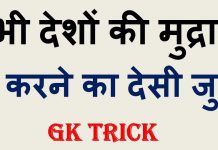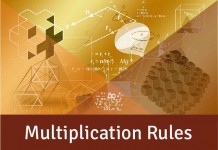Important Concepts to Solve LCM & HCF Problems
You all know that speed in calculation sets the complete base for Quantitative Aptitude section of various competitive exams and if you know enough Short Tricks in Quant Section, you will surely score better in the section. So, let us make it easy for all of you through these Simple and Easy Concepts to solve LCM & HCF Problems which will not only make quant questions easy but will also save your time. The tricks will be helpful for the upcoming Indian Railways recruitment (RRB) Exam and SSC CGL 2016 Exam.
HCF & LCM are acronym for words, Highest common factor and Lowest common multiple respectively.
Few Basic Terms:
- Prime number : A prime number is a natural number greater than 1 that has no positive divisors other than 1 and itself. For example, 2, 3, 5, 7, 11, 13, etc. are prime numbers.
- Co-Prime Number: Two numbers are said to be relatively prime, mutually prime, or co-prime to each other when they have no common factor or the only common positive factor of the two numbers is 1. In other words, two numbers are said to be co-primes if their H.C.F. is 1.
- Factors: The numbers are said to be factors of a given number when they exactly divide that number. Thus, factors of 18 are 1, 2, 3, 6, 9 and 18.
- Common Factors: A common factor of two or more numbers is a number which divides each of them exactly. Thus, each of the numbers – 2, 4 and 8 is a common factor of 8 and 24.
- Multiple: When a number is exactly divisible by another number, then the former number is called the multiple of the latter number. Thus, 45 is a multiple of 1, 3, 5, 9, 15 and 45.
- Common Multiple: A common multiple of two or more numbers is a number which is exactly divisible by each of them. For example, 12, 24 and 36 is a common multiple of 3, 4, 6 and 12.
- Prime Factorisation: If a natural number is expressed as the product of prime numbers, then the factorisation of the number is called its prime factorisation. A prime factorisation of a natural number can be expressed in the exponential form.
For example:
(1) 24 = 2 x 2 x 2 x 3 = 2^3 x 3.(2) 420 = 2 x 2 x 3 x 5 x 7 = 2^2 x 3 x 5 x 7
Methods of finding the L.C.M. of a given set of numbers:
The Least Common Multiple of two or more integers is always divisible by all the integers it is derived from. For example, 20 is a multiple of 5 because 5 × 4 = 20, so 20 is divisible by 5 and 2. Because 10 is the smallest positive integer that is divisible by both 5 and 2, it is the least common multiple of 5 and 4.
LCM can also be understand by this example:
Multiples of 5 are:
5, 10, 15, 20, 25, 30, 35, 40, 45, 50, 55, 60, 65, 70 …
And the multiples of 6 are:
6, 12, 18, 24, 30, 36, 42, 48, 54, 60, 66, 72, …
Common multiples of 5 and 6 are:
30, 60, 90, 120, ….
Hence, the lowest common multiple is simply the first number in the common multiple list i.e 30.
By Prime Factorizations
The prime factorization theorem says that every positive integer greater than 1 can be written in only one way as a product of prime numbers.
Example: To find the value of LCM (9, 48, and 21).
First, find the factor of each number and express it as a product of prime number powers.
Like 9 = 32,
48 = 24 * 3
21 = 3 * 7
Then, write all the factors with their highest power like 32, 24, and 7. And multiply them to get their LCM.
Hence, LCM (9, 21, and 48) is 32 * 24 * 7 = 1008.
By Division Method
Here, divide all the integers by a common number until no two numbers are further divisible. Then multiply the common divisor and the remaining number to get the LCM.
2 | 72, 240, 196
2 | 36, 120, 98
2 | 18, 60, 49
3 | 9, 30, 49
| 3, 10, 49
L.C.M. of the given numbers
= product of divisors and the remaining numbers
= 2×2×2×3×3×10×49
= 72×10×49 = 35280.
Methods of finding the H.C.F. of a given set of numbers:
72
54| 72|1
54
18| 54| 3
54
0
H.C.F. of 72 and 126 = 18
Relation between L.C.M. and H.C.F. of two natural numbers
The product of L.C.M. and H.C.F. of two natural numbers = the product of the numbers.
For Example:
LCM (8, 28) = 56 & HCF (8, 28) = 4
Now, 8 * 28 = 224 and also, 56 * 4 = 224
HCF & LCM of fractions:
Formulae for finding the HCF & LCM of a fractional number.
HCF of fraction = HCF of numerator / LCM of denominator
LCM of Fraction = LCM of Numerator / HCF of Denominator





















